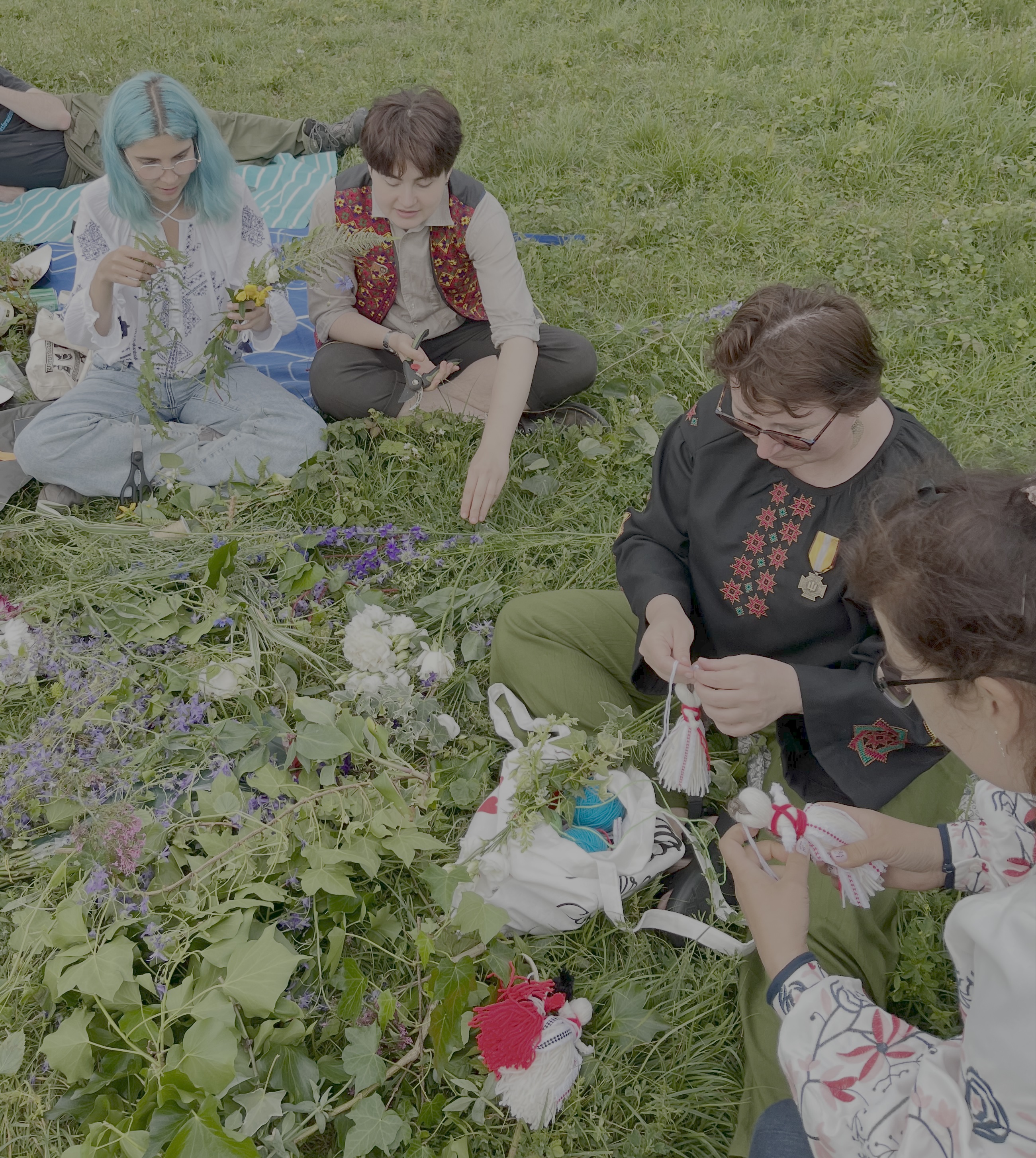A New Place For Kupala
 Making flower crowns and motanka
dolls at our 2025 Kupala gathering.
Making flower crowns and motanka
dolls at our 2025 Kupala gathering.Almost the first thing that Ukrainian refugees did after they began to reach Sussex in the spring of 2022, under the British government’s Homes for Ukraine scheme, was to form choirs. Their songs were a precious cultural cargo that needed no baggage space and were collectively owned: all the listeners seemed to know all the words, though they had not previously known each other.
Many of the songs were traditional, celebrating the folk calendar cycle, which is also a shared symbolic property. From wishing trees to amulet dolls and decorated eggs, folk lore, traditions and crafts are an important part of the symbolism and images that the new Ukrainian communities use to represent and sustain themselves. They have become steadily more important and widely embraced as the Russian aggression against Ukraine has grown.
All of them came together in the Kupala festival that took place in Brighton’s Preston Park a few months after the refugees began to arrive in 2022. It brought enchantment to a Victorian city park – despite the absence of Kupala’s two essential elements: fire, which is prohibited under park safety regulations, and flowing water, traditionally used as a divination medium by unmarried women who observe where it carries their flower crowns, for clues about their possible future husbands. Workarounds had to be devised. Instead of leaping over a bonfire, people held hands and jumped over bands of red cloth – which became a new local custom in subsequent years.
The 2022 Kupala festival was also the first major outdoor gathering that brought the newly arrived Ukrainians together, and it played an important role in bringing them together as a community. Folk-dance sessions and craft workshops helped British people to see what Ukrainian culture looks like, and helped many Ukrainians to become more practiced in it. The midsummer spell created a moment of shared imagination in which all this could happen.
That spell wasn’t cast by experts in folklore, but by ordinary people who wove together the textures, scraps and threads of what they knew or recalled about how to celebrate Kupala. Our impulse to explore Ukrainian traditions further was part of our motivation to start our Kupala Brighton project. We particularly want to explore what roles folk traditions play in Ukrainian communities today, and how those communities reshape them to meet their needs, wherever they are.
And we also want to help interweave Kupala with the other midsummer festivals that take place in England, not to mention the rest of Europe. One step in that venture is to actually celebrate it at midsummer. When the pagan festival was appropriated by the Christian church, it was attached to St John’s Eve and named after it – Ivana, of John, Kupala, the Baptist. The calendar used by Orthodox churches has pushed the date back to July, drawing Kupala away from the rest of Europe in the process. This year we celebrated it on the weekend of the solstice, in a small nature reserve of wetlands that resemble Kupala’s natural Ukrainian habitat, finding a new place for it in the mosaic of English lands, traditions and cultures.
Marek Kohn and Vladyslava Bondar
We wrote a slightly different version of this text for the National Folklore Survey for England's website. Thanks to them for inviting us!